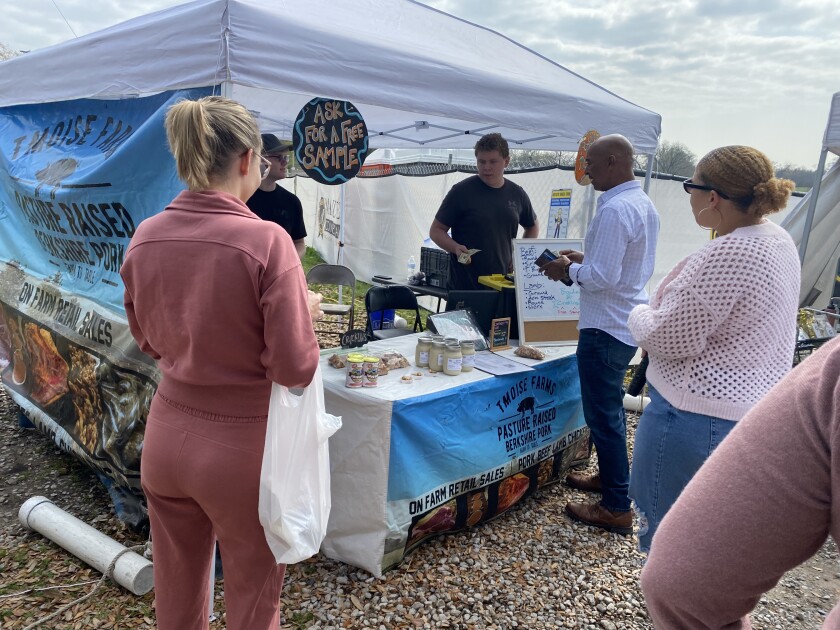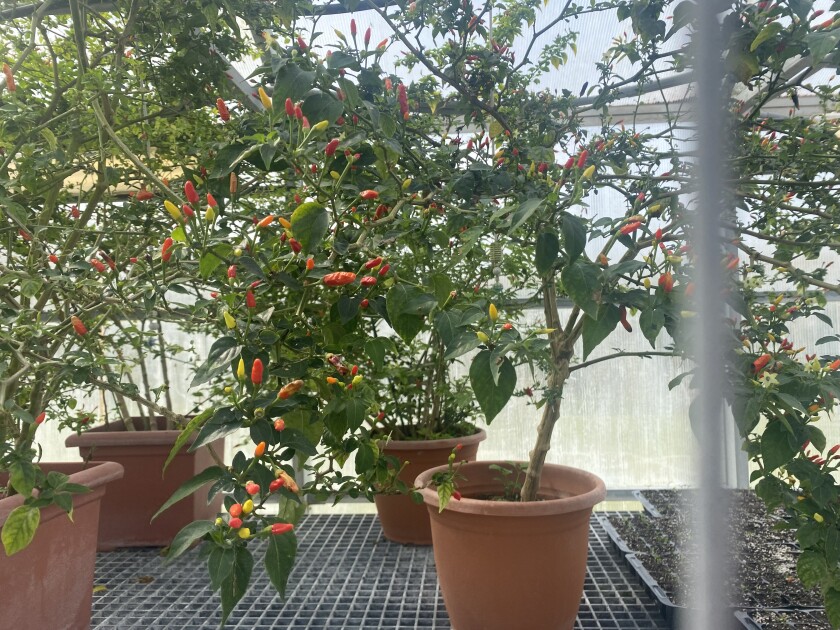Pasture-raised pork. Dry pasta made with durum wheat. Grass-fed beef.
Conversations with vendors and customers who have rural northern U.S. roots. A local band playing in the midst of the vendors selling their products. Occasionally swatting at mosquitoes.
A northern Plains farmers market in June?
Nope, the Lafayette (Louisiana) Farmers and Artisans Market I attended on March 2, 2024 was about as far south as you can get from North Dakota, where I live, and its surrounding neighbors, and still be in the United States.
Despite the 1,475 miles in distance — my home near Larimore is about 80 miles south of the U.S.-Canadian border and Lafayette is about 35 miles north of the Gulf of Mexico — there were many similarities between the Lafayette Farmers and Artisans Market and the farmers markets I’ve been to in North Dakota, South Dakota and Minnesota.
ADVERTISEMENT
The farmers market in Louisiana was populated with vendors that offered a variety of farm products. I tried a sample of cracklin at the booth of T. Moise Pasture Raised Pork, Sunset, Louisiana; bought several bags of pasta from Pasta Lab, St. Charles, Louisiana and talked to a vendor selling cuts of Wagyu beef that was produced from cattle raised on their Louisiana farm.

Besides its presence at the farmers market, there was evidence of agriculture in the sugarcane fields surrounding Lafayette. The sugarcane, which is harvested in the late fall or early in the year, is a perennial crop.
In early March, the sugarcane in the fields near Lafayette was several inches high, growing out of the stubble from last year’s crop.
Yields of sugarcane in the South, like sugar beets in the North, are, in part, dependent on weather conditions.
Hot, dry weather took a toll on the crop in 2023. Lafayette had record hot temperatures during the summer of 2023, the Louisiana American Cane Sugar League said.
There were 33 days during the 2023 growing season that the temperatures climbed to more than 100 degrees, a record for the city, the League said. The temperature reached 110 degrees one day, which also was a record.
Louisiana’s 2023 average sugarcane yield was estimated at 28.7 net tons per acre, down 3.6 net tons from 2022, according to the U.S. Agriculture Department National Agricultural Statistics Service. The state’s total production was 14.6 million net tons, down 9% from 2022, NASS said.
Not only were there connections between agriculture in the South and North, I talked to a couple of people in Lafayette who had family connections to North Dakota.
ADVERTISEMENT
One of them was a Lafayette Farmers and Artisans Market customer who overheard me telling the owner of Pasta Lab that my state’s farmers grow durum. She commented to me that her grandmother was from Valley City, N.D. The other was a vendor who told me that she had been on a visit to a city in North Dakota to see her mother’s grave. She couldn’t remember the name of the town but said it was the one that had the big flood in 1997. I asked her if it was Grand Forks and she said that it was. I explained to her that Grand Forks was the “big city” in my part of the state and that my husband worked there.
My final brush with agriculture was during a visit to Avery Island, where McIlhenny tabasco is made. I toured the grounds, along with my husband, Brian; our daughter, Ellen; my brother, Terry and sister-in-law, Marie, and saw the greenhouse where peppers are grown for research, the factory where the tabasco is produced and the barrels where it ages.

I also boosted the local economy at the gift shop where I bought tabasco in the form of hot sauce in a variety of flavors and forms.
Besides enjoying learning about the agriculture near Lafayette, my favorite part of our visit to my brother’s and sister-in-law was decidedly non-northern Plains like. I ate fresh shrimp every day there, took walks in 70-plus degree temperatures and admired the fuchsia blooms on the azalea bushes, purple, pink and red blossoms on the camilia trees and yellow snapdragons in the flower gardens.

But I didn’t envy Terry’s and Marie’s neighbors who were mowing their green, growing lawns. That will come soon enough. For now, I’m enjoying the dormant brown of my northern Plains farmstead.
Ann Bailey lives on a farmstead near Larimore, N.D., that has been in her family since 1911. You can reach her at 218-779-8093 or abailey@agweek.com.








